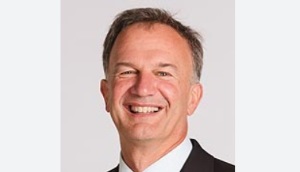
BNZ research head Stephen Toplis, writing in the bank’s latest Economy Watch, says, “In our humble opinion, the Quarterly Survey of Business Opinion (QSBO) screams cut rates sooner rather than later.
Headlining the article ‘QSBO says inflation beaten’, Toplis says pricing intentions have slumped, the labour market is easing aggressively, growth is dead, and the market sees rate cuts soon, although the RBNZ may not.
In its last Monetary Policy Statement, the RBNZ predicted the OCR staying at 5.5% until August next year.
However, all the major banks are now pencilling in an OCR move down in November this year. The BNZ says the markets have priced in a 45% chance of an October cut and are absolutely convinced it will have happened by November.
The QBSO survey shows a net 23% of businesses intend increasing prices. This is a marked drop on the net 33% who thought likewise a quarter ago, and the lowest reading since December 2020.
“It would be a rarity for headline inflation to be outside the target band with this level of intention,” Toplis says. “Moreover, there is no reason to believe the drop in pricing intentions is yet complete. The momentum is viciously downward.”
He says, however, the problem is that these intentions will tend not to well capture the sticky non-tradables prices that are, and will continue, to keep headline inflation aloft.
While businesses, generally, may be struggling to raise selling prices, local authorities – who aren’t surveyed – and insurers don’t seem to be having much difficulty in hiking prices at a double-digit pace.
“Nonetheless, the RBNZ simply must be overjoyed with what it sees here.”
Employment numbers are also aggressively easing. A net 10% of employers say they will be reducing staff. Excluding the pandemic outbreak, this is the weakest reading since June 2009.
“This leaves us confident there will be no employment growth in the year ended December and the unemployment rate will surge to 5.3% by year’s end,” Toplis says.
Only a net 9% of businesses reported labour as their major factor constraint. That’s the lowest non-Covid reading since December 2012.
Toplis says not surprisingly, the survey has encouraged the market in thinking the RBNZ will be forced to move much earlier on OCR cuts than it has indicated.
Enough is enough
Kiwibank agrees the inflation dragon has been slain and interest rate cuts are needed to avoid economic scarring.
Chief economist Jarrod Kerr says the bank’s economists are just waiting for the dragon to hit the turf.
“This is good news for businesses who have had to deal with rapid inflation in parts.
“High inflation, coupled with weakening demand, has hurt profitability. And it appears ‘profitability’ is not looking too good. It’s hard to invest for future growth when your profitability is in decline.”
Kerr says when businesses stop investing for the future, that kills growth.
“When businesses tell us they’re unwilling to invest in more staff, equipment, buildings and all that good stuff that generates growth, well, we take a red pen to our forecasts.
“Yes, the RBNZ’s actions are designed to rein in business intentions, from the rapid rebound out of Covid. But enough is enough. The risk here is severe economic scarring, from overly restrictive monetary policy.”
Hard data needed
ANZ economist Miles Workman says the bank remains comfortable that the RBNZ will be cutting considerably earlier than it has suggested.
“If the second quarter CPI inflation is ‘well behaved’ and GDP growth is anything like as weak as the QSBO survey shows, November will certainly be a ‘live’ meeting. The risks are certainly starting to tilt that way,” he says.
However, before the RBNZ considers cuts, Workman says it will need to see hard data inflation is back in the bag and not just surveys and anecdotes.
“The RBNZ will likely need more convincing before it starts feeling comfortable that upside sticky inflation risks have been appropriately mitigated. For that, the second quarter CPI inflation data is likely to carry more weight in its calibrations.”




